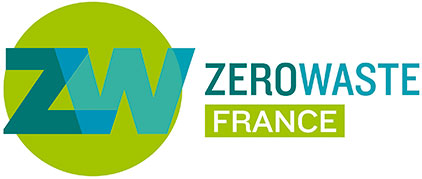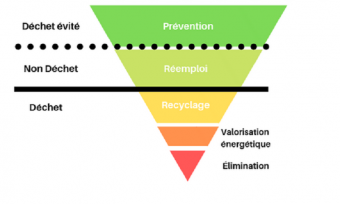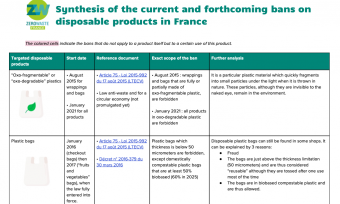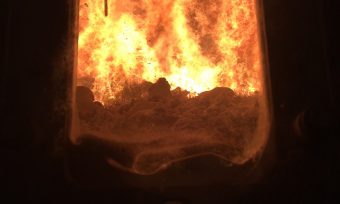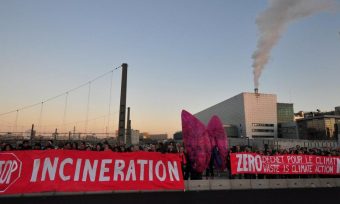The waste hierarchy before national courts : from incantation to application
The article L541-1 II from the environmental Code gives priority to waste reduction and sets a hierarchy in the treatment methods of waste. French judges increasingly refer to this disposition, which is a testimony of their growing willingness to enforce this legal principle. With kind collaboration of Thibault Quere for translation.
The waste hierarchy constitutes the juridical basis for waste management, which tends to favor waste reduction, then reuse and finally recycling. It is a European and French norm which normally has to be respected by all actors in the field of waste management across all sectors.
A few years after being put in place, it has become a consensual incantation that is regularly quoted in eco-organisms mission statements, sectorial decrees, studies of impact and other texts regulating waste management. It is also systematically quoted by industrials to (try to) explain that their projects are compliant, especially when they move from “landfill” to “incineration”. However, some recent court decisions give additional strength to this norm and specifically its first levels, against common belief about the flabbiness of this regulation.
The Conseil d’Etat validates some bans of disposable products thanks to the waste hierarchy
In a promising decision from 28/12/2018, the Conseil d’Etat reminded that the priority has to be prevention and waste reduction, while confirming the flexibility left for legal and executive powers to regulate disposable products, notably through bans. In this situation, the Conseil d’Etat dismissed the appeal stemming from industrials trying to tackle this regulation which bans some products made of single-use plastic. By using the hierarchy of treatment methods and insisting on the precedence of prevention, this decision shows that the Conseil d’Etat has largely evolved in its understanding of the norm. This decision is a safe and stable basis for future regulations protecting the environment. In fact, the judges were not satisfied with alternative measures proposed by the industrials (better collection, etc.) and considered that they “do not provide solutions to the objectives of prevention and waste reduction”. The judges also analysed, in the writings of the companies, a “partial solution to the objective of pollution prevention as long as a part of waste still avoids waste management channels according to the hierarchy set by the law (see our analysis – Conseil d’Etat, 28 December 2018, n°404792).
The waste hierarchy as a tool to put the brakes of certains waste management projects
As part of litigation linked to waste treatment plants, two administrative courts of appeal (Lyon and Bordeaux) have successively given precisions about some dispositions provided in the law for energetical transition and reaffirmed the hierarchy. The Court of Lyon has recalled in its judgement that the “Préfets” (i.e. local government) have the power to refuse new industrials demands for permits to run for example, mecanico-biological sorting plants (CAA Lyon, 4 July 2017, n°14LY02514). The Administrative Court of Appeal of Bordeaux went even further when cancelling a project of a mecano-biological sorting plant (MBT) and household waste incineration (CAA Bordeaux, 12 December 2017, n°17BX01387) by explicitly invoking the hierarchy: “ […] the creation of a non-dangerous waste treatment unit in Echillais is not compliant with the hierarchy of waste management treatment methods as specified in the disposition of the article L. 541-1 of the Environmental Code”.
In a similar context a few years ago, the administrative tribunal of Clermont-Ferrand also used the hierarchy to use its prerogatives of full litigation, and reduce the incineration capacity of an incineration plant. The tribunal finally gave approval to the exploitation while reducing the capacity on the basis that “the installation appears to be oversized which is to generate additional pollutions should the requiring company use it at the maximum capacity as per the authorization that will be delivered; we shall then prevent such a risk”. The Préfet was then asked to grant the authorization and reduce the capacity from 170 000 tons to 150 000 tons a year (TA Clermont-Ferrand, 5 May 2019, n°081720).
In a similar context related to the project of a incineration plant (project Syméo in the Oise department), the administrative court of appeal of Douai approved the decision of the prefect to stay the proceedings as part of an authorization request. As an outcome of a judgment based on the hierarchy, and after recalling the doubts surrounding the projects especially regarding the reliability of the figures related to the amount of waste to manage, the judges have stated that: “in view of, on one side, the lack of local plan to treat household waste based on reliable figures regarding volumes of waste and capacities of treatment in the department of Oise and, on the other side, the firm and argued opposition of several major actors of the department in the field of waste management which has led to conduct several reports and studies over the relevance of the Symeo project all along the instruction time, and, finally, the lack of possibility to conduct the Symeo project as it over the chosen field, the prefect of Oise has committed no mistake of appreciation in its decision to prorogate the instruction delay by 6 additional months.” This judgment is very interesting for the judges have appropriated the figures and gone deep in the analysis which leads to reinforced exigence of justification for waste sources and hypotheses that were retained (for full reading, see CAA Douai, 22 December 2016, n°15DA01955).
These decisions set interesting milestones so that municipalities es and industrials give proper justification of the respect of the hierarchy of treatment methods, in particular when working on studies of impact which most of the time are brushed very quickly on that aspect. The jurisdictions could then be more severe when judging some projects where:
- legal objectives are obviously violated, for example in the case of the reconstruction of the incineration plant of Ivery-Paris 13, which will cost around 1 billion euros when 20% or less of waste are recycling over the territory of the contracting syndicate, the Syctom;
- several efficient tools were not deployed prior to the construction of a residual waste treatment plant, over the whole territory covered by the catchment area of the project. This includes management at source of biological waste, incentive pricing and special royalty, and implementation of local programs of prevention. We could imagine that the prefectorial order limits the catchment area of the plant, only authorizing waste from territories with incentive pricing, a local prevention plan (mandatory according to french legislation), biological waste collection, etc. (example of the incineration plant of La-Chapelle-Saint-Luc near Troyes which would cost around 80 million euros while the performances of the concerned territories could largely be improved and all the pre-cited tools are not implemented).
The impossibility of derogating too far from the hierarchy in terms of planification
On the waste planning side, the judges cancelled a non-hazardous waste management and prevention plan on the basis of hierarchy (planning is an obligation under Article L. 541-14 of the Environmental Code). Indeed, the Administrative Tribunal of Rennes considered that the plan submitted to it failed to meet certain objectives, in particular in that it provided for a doubling of the tonnages incinerated (whereas the objective of the law was to reduce tonnages), and departed too widely from the waste hierarchy . The judges considered that a derogation representing 69% of the department in question no longer constituted a derogation (TA Rennes, 24 May 2017, n°1404871).
These decisions are therefore very interesting: the French courts are gradually taking advantage of the opportunity to ensure that the legislative and regulatory provisions are strictly respected.
The hierarchy, tomorrow’s basic standard for extended producers responsiblity chains ?
In another decision, the Conseil d’Etat validated certain provisions of a specification for an EPR sector, which excluded certain activities from the financial support of eco-organisms (in this case, support for paper composting within the packaging and paper sector). This decision was based on the desire to give priority to the reprocessing of the products concerned « for their original purpose ».
Indeed, the Council considered that the contested decree could legally provide that « the share of financial support calculated according to the tonnage of waste collected by applying the « downstream scale », paid by eco-organisms to local authorities, would be determined according to those of this waste which, resulting from selective sorting and collection, are directed towards the recycling sector of the paper industry for reprocessing for the purpose of their initial function; that the scale thus fixed leads legally, in accordance with the principles resulting from Articles L. 541-1 and L. 110-1-2 of the Environment Code, to give priority to the production of resources from recycling » (Conseil d’Etat, 30 May 2018, n°406667).
This decision opens up an interesting perspective in the handling of the specifications of eco-organisms. Indeed, some EPR sectors are still not concerned by re-use obligations (e.g. batteries, while disposable battery regeneration schemes exist), while others still have only a nascent action on prevention (financial support for re-use per tonne lower than for recycling, derisory budgets overall, etc.). The waste hierarchy , whose effectiveness is proven by the Conseil d’Etat in this case, could make it possible to better « adjust » the obligations of eco-organisms, particularly from a financial point of view, according to the different levels.
